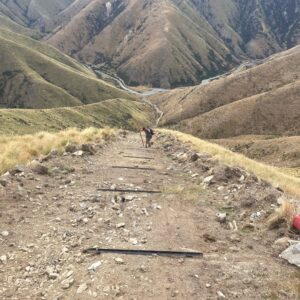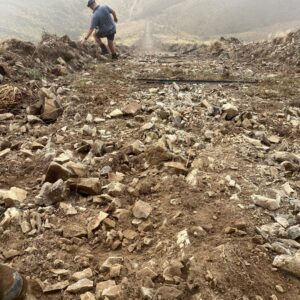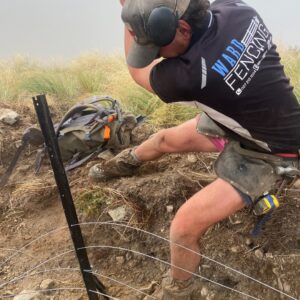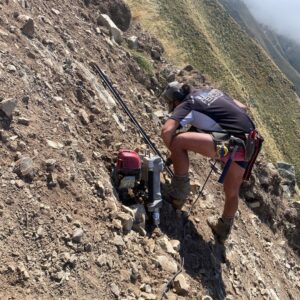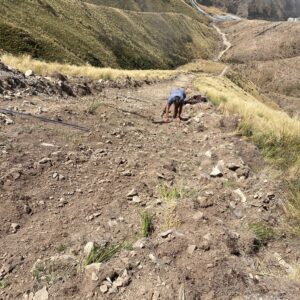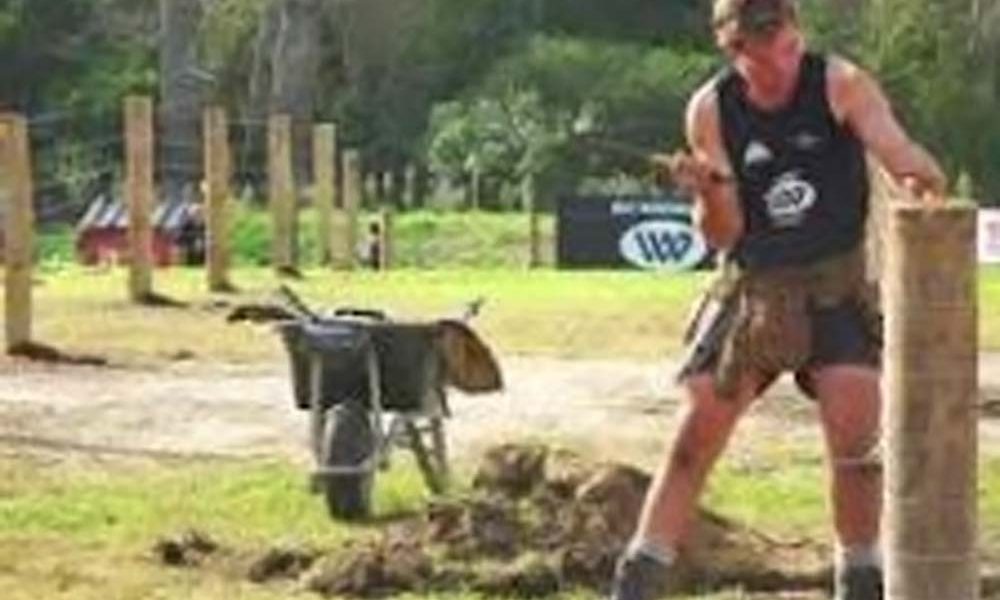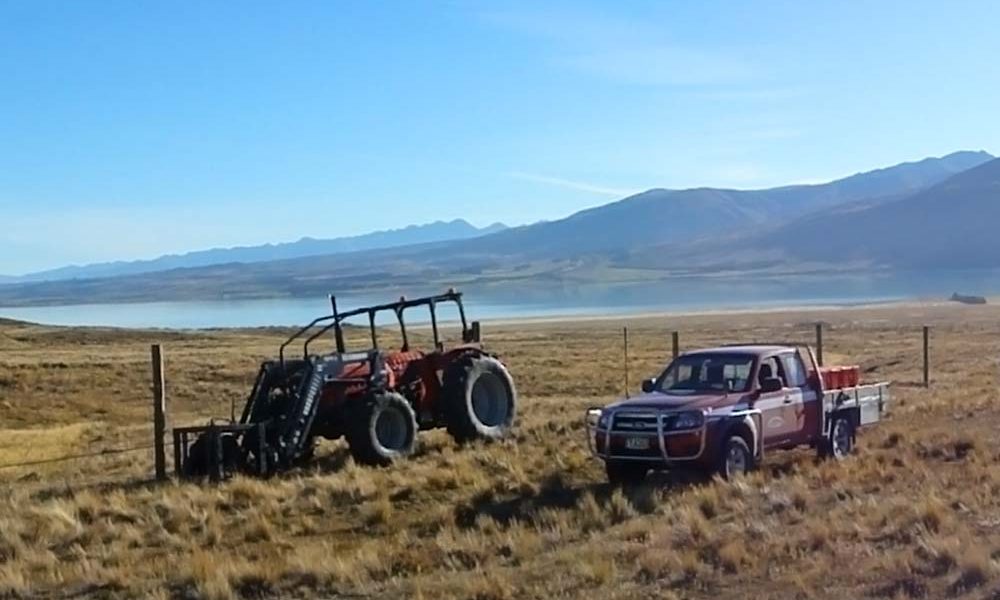
Building a one-kilometre, all-steel fenceline in a steep gully without vehicle access was a challenging but ultimately rewarding job for Canterbury-based Ward Fencing.
In early February, they took on the job located near Fairlie, putting up a one-kilometre steel fence starting on top of a main ridge line and heading down a very steep gully, towards the main creek.
The line was cut by a “very ballsy” dozer operator who had managed to get up around the top of another basin to get onto the line, owner Simon Ward told WIRED.
The fence used Number 8 on the bottom wire and 2.5mm for the other six wires.
Five-foot steel waratahs were used as the run posts and steel Waratah MaxYs for the angles and terminations.
The job had limited four-wheel drive access to the bottom of the line, and foot-only access to the top of the line, which was 1.8km along the main ridge.
“Our good mate Ben Smith, and his son Mac, went out onto the line and packed the gear into three bundles to be lifted on to the line with a helicopter,” Simon explained.
The pair spent a couple of days spreading the gear out down the line for the Ward Fencing team to start building the fence, saving valuable time.
Accommodation was provided on the station, which was about a 40 to 45-minute drive up onto the top of the ridge. Each day, the team of Simon, Ben Smith, and Reece Valois would be dropped off by the client at the end of the station track and walk in to the line with the gear needed for the day.
Being a good walk into the line, and with no easy way back to base, extra caution was placed on making sure they had everything they needed, Simon said, as well as spare gear in case of breakdowns, fuel generators, a rock drill, and plenty of water for the hot conditions.
The line had six corners, done in four strains.
“We reckon we sunk about 300 Waratahs in, including all tie-downs and tie-backs for angles/terminations, and we reckoned of the 300 there would have only been 30 to 40 that didn’t have to be drilled. It was chewy going.”
Nathan Monk of Monk Fencing in Tekapo lent his rock drill and generator for the job, which was hugely appreciated.
The line took roughly 45 hours to build and was charged out on a per hour basis to factor in drilling and other machine work.
“The line took a massive effort from everyone. A lot of gear had to be carried on to the line and the steep grade, loose terrain, and heat played a factor, but it was bloody good fun and we loved it.
The client had been hugely helpful in providing accommodation, dropping the team on the line and providing a vehicle at the bottom, Simon said.
“(It) was a massive time-saver.”
Time had also been saved with Ben and Mac starting the line earlier, laying out
the bundles.
Simon said it was crucial to be organised with a good plan in place for materials, tools, a checklist in place, and being proactive with batteries, fuel and other items.
“We had bloody good fun on this line and we were stoked with how it came up.
“It was tough going and a bloody tough challenge, a lot of blood and sweat was lost, and some character was built.
“What a wicked spot to work and not a bad spot to appreciate over the lunch hour.”
While it was very different from most fence lines, the actual building of the fence and the ideology was the same, Simon said.
“The steepness of the line, the heat, and the logistics of getting gear organised and out onto such a remote line added another element that made it quite different.”
He said efficiency on the line was vital with no vehicle to drive up and down the line.
“Being so steep, we couldn’t afford to be walking up and down it all day to check something, grab some gear or tools, or head back to the top for so much as a drink bottle. So, we did our best to have it mainly built in one pass.”
Written by Rosa Watson
Published in WIRED issue 74/September 2024 by Fencing Contractors Association NZ
Read WIRED online
Follow us on Facebook
© Fencing Contractors Association NZ (FCANZ)

